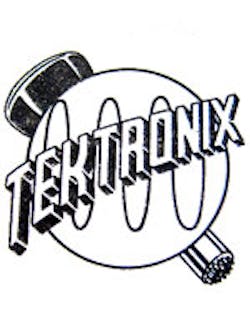While the rest of the world seems to have moved on to newer technologies, the venerable cathode ray tube (CRT) still dominates the Indian television market. Yet LCD TV sales are gaining momentum quickly on the subcontinent, and 2010 will be the last year that CRTs can claim their dominance there on a revenue basis, according to iSuppli Corp.
One wonders whether some firm in Eastern Europe will seize the opportunity to supply replacements the way New Sensor/Electro Harmonix/Sovtek (Svetlana) did for vacuum-tube “glass FETs.” (Where would the ham radio community be without a supply of new 6146s, or the “warm-sound” audio folks be without 6V6s?)
Anybody who worked at Tektronix, as I did in the 1970s, knows a lot of CRT stories. One goes back to the earliest days of the company, when it competed with DuMont for oscilloscope business. Back then, although its time bases weren’t precisely calibrated, as Tektronix’s were, DuMont had a cost advantage because it was able to manufacture its own low-cost jugs thanks to the economies of scale made possible by its TV-set business.
According to the legend, a canny Tek buyer got a deal on a huge number of DuMont CRTs. The DuMont salesman was briefly tickled—until his bosses realized that his sale would put the DuMont oscilloscope production line on allocation for a year or more, ultimately leading to Tek’s sales penetration.
The move also inspired Howard Vollum to build Tek a facility that would produce its own CRTs. In turn, that led not only to ceramic-body jugs that were strong enough to support a square form factor and a flat screen, but also to the first real-time computer graphics and what must be the world’s most bizarre and expensive analog-to-digital converter (ADC).
Computer graphics that were sharp enough to reproduce schematics and mechanical drawings were first made possible by the bistable storage tube CRT developed by a Tek engineer named Robert Anderson (http://en.wikipedia.org/wiki/Direct-View_Bistable_Storage_Tubes). One advantage of the storage tube was that, in the early 1970s, computer memory, whether as a magnetic core or as semiconductors, was too expensive to use to make screen buffers.
Anderson’s prototype used a cathode ray to write the CRT screen in either raster or vector fashion while the screen was being bathed in a shower of electrons from “flood” electrodes. The extra energy of the electron beam would toggle screen phosphors to their “on” state, creating an image. Essentially, you had an electronic Etch-a-Sketch. Erasure was accomplished by a burst from the flood electrodes.
The Anderson tube led to a generation of fast-writing storage scopes for transient capture. More significantly, it led to novel products like the 4010 and 4014 terminals and the first commercially successful desktop computer for engineers, the 4051, with a bit-bucket processor, native BASIC, and a 3M removable tape drive.
You could do real engineering design on the 4051, but you could also write games. (I wrote some enhancements for an artillery game that “went viral” in a modest way.) The 4051 led to the more powerful 4081, a desk-sized rather than desktop computer that is primarily known for providing the visual special-effects graphics for the original (1978) Battlestar Galactica TV series.
That remarkable ADC was the 7912AD (http://w140.com/tekwiki/wiki/7912). At least you could think of it as a 9-bit, 100-Gsample/s ADC. It was an oscilloscope with a 2-GHz vertical amp (in the fastest version) and a CRT with an unseen digital imager, rather than a phosphor screen. When a transient was written across the imager, it would be clocked out and the resulting digitized transient would be communicated over an IEEE-488 interface. Tek sold many of them to the U.S. government, which used them once each. (They were vaporized in nuclear explosions.) The 1985 catalog lists them for $27,025.
That was the heyday of the cathode ray, when real engineers squirted focused beams of subatomic particles through bottles of almost pure vacuum to entertain and enlighten. Ave atque vale. We shall not see their like again.
About the Author

Don Tuite
Don Tuite (retired) writes about Analog and Power issues for Electronic Design’s magazine and website. He has a BSEE and an M.S in Technical Communication, and has worked for companies in aerospace, broadcasting, test equipment, semiconductors, publishing, and media relations, focusing on developing insights that link technology, business, and communications. Don is also a ham radio operator (NR7X), private pilot, and motorcycle rider, and he’s not half bad on the 5-string banjo.
